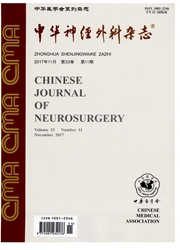

 中文摘要:
中文摘要:
目的 探讨应用RNA干扰(RNAi)技术抑制U251恶性胶质瘤细胞株AKT1和COX-2表达后,在体外对U251细胞增殖的抑制作用.方法 构建靶向AKT1和COX-2的RNAi重组腺病毒表达载体(rAd-A+C)转染至U251细胞.应用Realtime PCR检测AKT1和COX-2 mRNA水平的变化;应用Western blot检测AKT1和COX-2蛋白水平的变化,并对肿瘤细胞中相关功能蛋白的表达进行分析;应用MTr法和流式细胞术评价肿瘤细胞的增殖活性.结果 rAd-A+C可显著抑制U251细胞AKT1和COX-2的表达;与对照组和无义序列处理组(rAd-HK)比较,Western blot分析结果显示下游相关因子PCNA、Cyclin D1表达下降,而p53表达上调;细胞周期分析结果表明rAd-A+C处理组进入S期的细胞数较对照组减少了7.0%~7.8%,出现G0/G1期阻滞;MTT法分析显示rAd-A+C处理组细胞生长抑制率>58%.结论 靶向AKT1和COX-2的RNAi技术可显著抑制U251细胞AKT1和COX-2表达,在体外对U251细胞增殖活性产生明显抑制作用.因此,RNAi重组腺病毒表达载体介导的基因治疗可成为胶质瘤靶向治疗的新策略.
 英文摘要:
英文摘要:
Objective To investigate the effects of knocking down AKT1 and COX-2 by RNAi on the proliferation activity of U251 glioma cells in vitro.Methods The recombinant adenovirus vector which contained RNAi expression construct of AKT1 and COX-2 (rAd-A + C) was transfected into U251 cells.The silencing effects of RNAi on AKT1 and COX-2 expression were identified by realtime PCR and Western blot.Western blot was also undertaken to analyze the expression of some functional proteins.The proliferation activity of U251 cells transfected by rAd-A + C was evaluated by MTT and flow cytometry.Result RAd-A + C dramatically down-regulated the expression of AKT1 and COX-2 in U251 cells.As compared with parental and rAd-HK transfected cells,the protein expression of PCNA and CyclinDl was down-regulated in rAd-A + C treated cells,meanwhile p53 was upregulated.Decreased AKT1 and COX-2 expression in rAd-A + C transfected cells was accompanied by 7.0% to 7.8% decrease in U251 cells in S phase with G0/G1 phase arrest.Meanwhile,the proliferation activity was significantly decreased in rAd-A + C transfected cells by the MTT assay.Conclusion RNAi targeting AKT1 and COX-2 could significantly down-regulate their expression in a sequence-specific manner,exerting proliferation inhibition effect on U251 cells in vitro.Consequently,the recombinant adenovirus vector mediated RNAi gene therapy may be a new strategy in targeting molecular therapy of gliomas.
 同期刊论文项目
同期刊论文项目
 同项目期刊论文
同项目期刊论文
 AKT2 expression is associated with glioma malignant progression and required for cell survival and i
AKT2 expression is associated with glioma malignant progression and required for cell survival and i MicroRNA-21 inhibitor sensitizes human glioblastoma cells U251 (PTEN-mutant) and LN229 (PTEN-wild ty
MicroRNA-21 inhibitor sensitizes human glioblastoma cells U251 (PTEN-mutant) and LN229 (PTEN-wild ty MiR-218 reverses high invasiveness of glioblastoma cells by targeting the oncogenic transcription fa
MiR-218 reverses high invasiveness of glioblastoma cells by targeting the oncogenic transcription fa Downregulation of miR-21 inhibits EGFR pathway and suppresses the growth of human glioblastoma cells
Downregulation of miR-21 inhibits EGFR pathway and suppresses the growth of human glioblastoma cells MicroRNA-221 and microRNA-222 regulate gastric carcinoma cell proliferation and radioresistance by t
MicroRNA-221 and microRNA-222 regulate gastric carcinoma cell proliferation and radioresistance by t Global changes of mRNA expression reveals an increased activity of the interferon-induced signal tra
Global changes of mRNA expression reveals an increased activity of the interferon-induced signal tra Adenovirus-mediated shRNAs for co-repression of miR-221 and miR-222 expression and function in gliob
Adenovirus-mediated shRNAs for co-repression of miR-221 and miR-222 expression and function in gliob Co-suppression of miR-221/222 cluster suppresses human glioma cell growth by targeting p27kip 1 in v
Co-suppression of miR-221/222 cluster suppresses human glioma cell growth by targeting p27kip 1 in v 期刊信息
期刊信息
